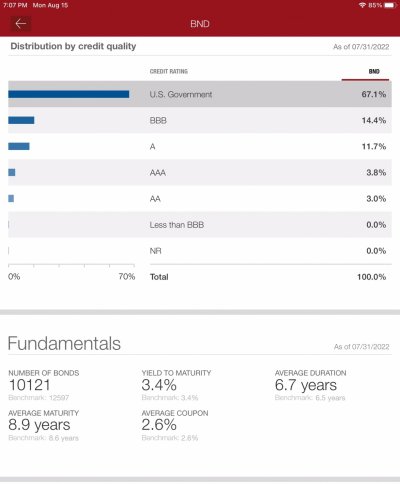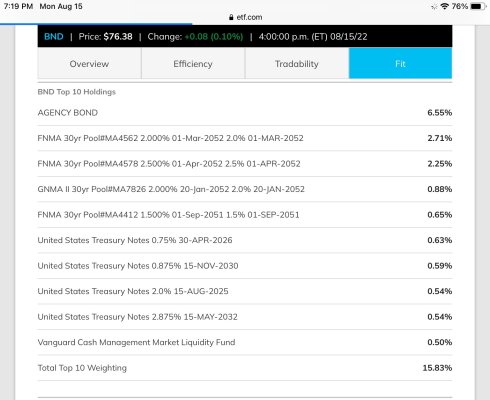I don't think it is necessarily a wash in the long run but my main point is that the fair value of individual bonds have dropped in this period rising rates so both bond fund investors and individual bond investors have seen declines in portfolio value in 2022.
So a case could be made for holding bond funds when rates stabilize, rather than bonds. Bond fund holders can be more nimble; many here sold in January and avoided the decline in their PVs. Holders of individual bonds, OTOH, would have messed up their ladders.
I realize that an individual bond will pay the par value upon maturity. However, a bond holder could have sold 100 bonds priced at $108 in January and bought back 108 of the same bonds priced at $100 in June. In fact, the need to maintain their ladders probably induced some folks to buy bonds in January.
Just a thought. I completely agree that for someone investing right now, a ladder makes more sense than a fund.


